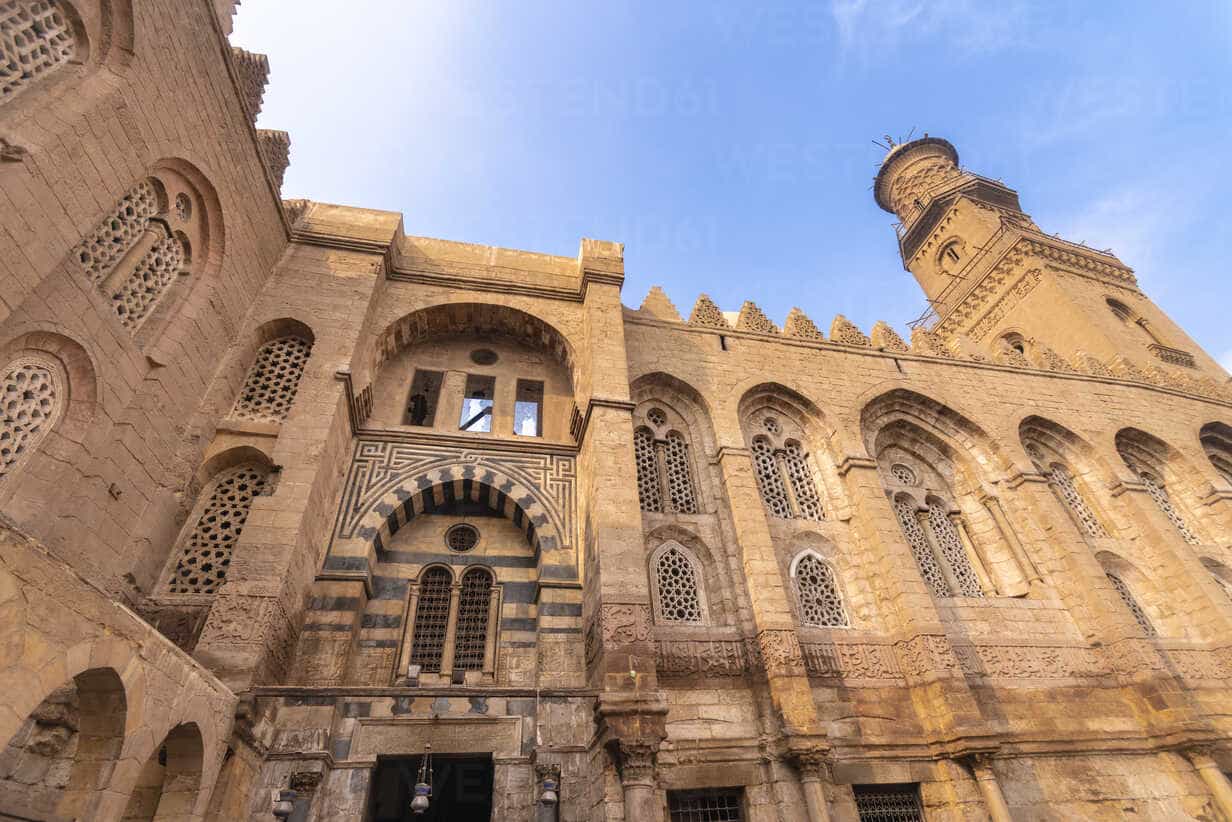Welcome to the enchanting world of Islamic Cairo, where every street tells a tale of centuries past. In this article, we embark on a journey through time to explore the religious complex of Al Rifai and Sultan Qalawun, two architectural marvels nestled in the heart of Cairo, Egypt. Join us as we unravel the history, significance, and architectural splendor of these sacred sites.
1. Historical Context:
To truly appreciate the Religious Complex of Al Rifai and Sultan Qalawun, we must delve into the rich history that surrounds them. Built during different eras, these structures stand as timeless witnesses to the cultural and religious evolution of Egypt.
Al Rifai Mosque:
The Al Rifai Mosque, also known as the Royal Mosque, was constructed in the late 19th century during the reign of Khedive Ismail. Its purpose was to serve as the final resting place for the royal family of Egypt. The mosque’s design blends Ottoman, Mamluk, and Gothic architectural styles, creating a unique and visually striking masterpiece.
Sultan Qalawun Complex:
Adjacent to the Al Rifai Mosque lies the Sultan Qalawun Complex, named after the Bahri Mamluk Sultan Qalawun. Built in the 13th century, this complex comprises a mosque, a madrasa (Islamic school), and a mausoleum. The architecture reflects the grandeur of the Mamluk era, showcasing intricate geometric patterns, ornate calligraphy, and impressive domes.
2. Architectural Grandeur:
Al Rifai Mosque:
The façade of the Al Rifai Mosque captivates visitors with its towering minarets and intricate detailing. The interior, adorned with colorful stained glass windows, marble columns, and chandeliers, offers a serene space for prayer and reflection. The mausoleum houses the tombs of various members of the Egyptian royal family, adding an air of regality to the ambiance.
Sultan Qalawun Complex:
The Sultan Qalawun Complex boasts a harmonious blend of Islamic architecture. The central courtyard, surrounded by elegant archways, leads to the prayer hall adorned with mesmerizing tilework. The mausoleum, featuring an impressive dome, is a testament to the architectural prowess of the Mamluks.
3. Cultural Significance:
These religious structures not only serve as places of worship but also hold immense cultural significance. The Al Rifai Mosque, with its association with the Egyptian royal family, stands as a symbol of the nation’s history and continuity. The Sultan Qalawun Complex, on the other hand, is a testament to the cultural flourishing during the Mamluk era, reflecting the intellectual and artistic achievements of the time.
In the heart of Cairo’s bustling streets lies a tranquil sanctuary that whispers tales of bygone eras—the Religious Complex of Al Rifai and Sultan Qalawun. As you explore the intricate architecture and soak in the cultural richness, you’ll find yourself transported to a time when Cairo was a beacon of Islamic art and scholarship. Embrace the magic, relish the history, and let the Religious Complex be a highlight of your journey through the treasures of Egypt.



Comment (0)